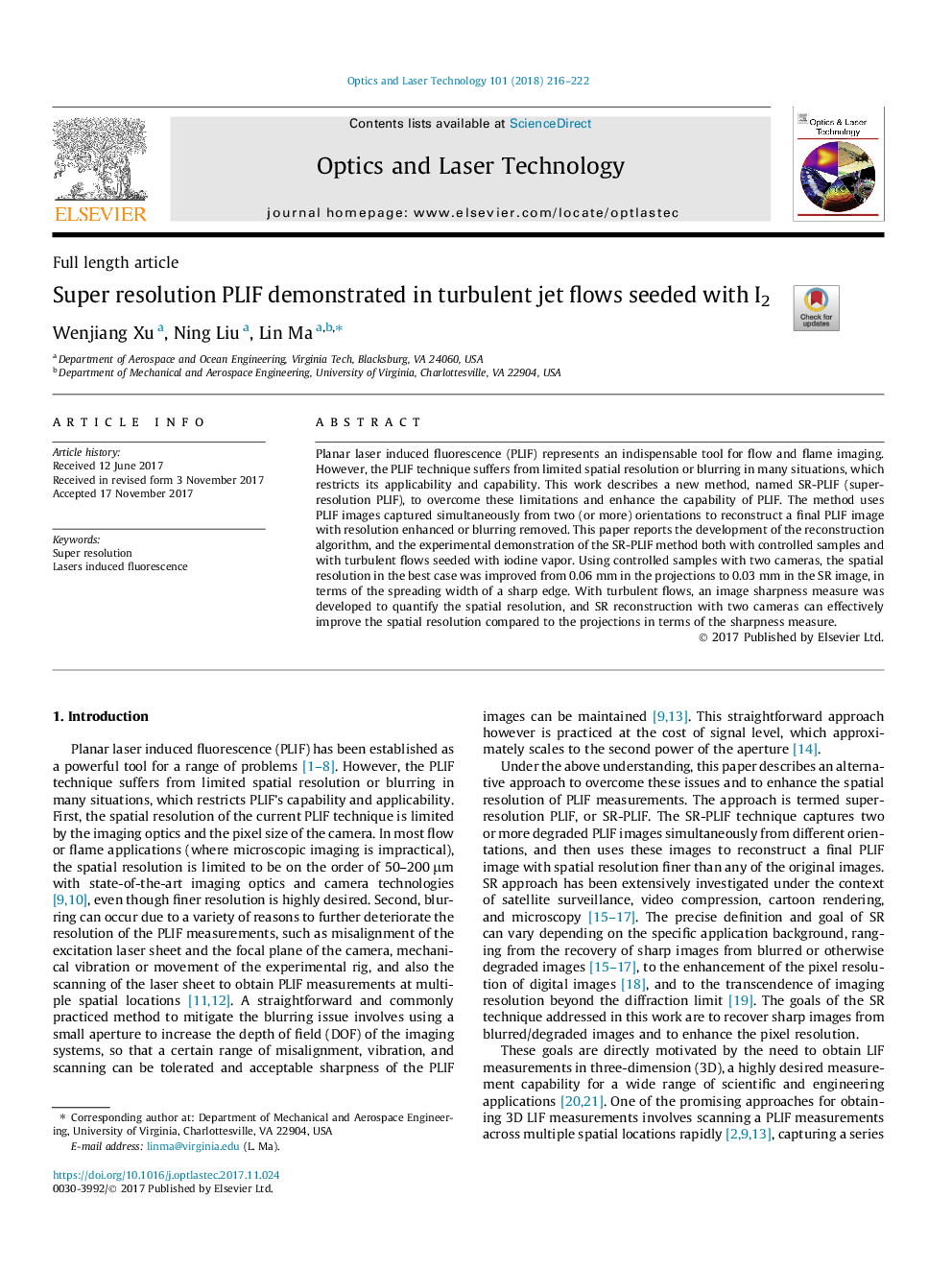| Article ID | Journal | Published Year | Pages | File Type |
|---|---|---|---|---|
| 7129338 | Optics & Laser Technology | 2018 | 7 Pages |
Abstract
Planar laser induced fluorescence (PLIF) represents an indispensable tool for flow and flame imaging. However, the PLIF technique suffers from limited spatial resolution or blurring in many situations, which restricts its applicability and capability. This work describes a new method, named SR-PLIF (super-resolution PLIF), to overcome these limitations and enhance the capability of PLIF. The method uses PLIF images captured simultaneously from two (or more) orientations to reconstruct a final PLIF image with resolution enhanced or blurring removed. This paper reports the development of the reconstruction algorithm, and the experimental demonstration of the SR-PLIF method both with controlled samples and with turbulent flows seeded with iodine vapor. Using controlled samples with two cameras, the spatial resolution in the best case was improved from 0.06â¯mm in the projections to 0.03â¯mm in the SR image, in terms of the spreading width of a sharp edge. With turbulent flows, an image sharpness measure was developed to quantify the spatial resolution, and SR reconstruction with two cameras can effectively improve the spatial resolution compared to the projections in terms of the sharpness measure.
Keywords
Related Topics
Physical Sciences and Engineering
Engineering
Electrical and Electronic Engineering
Authors
Wenjiang Xu, Ning Liu, Lin Ma,
